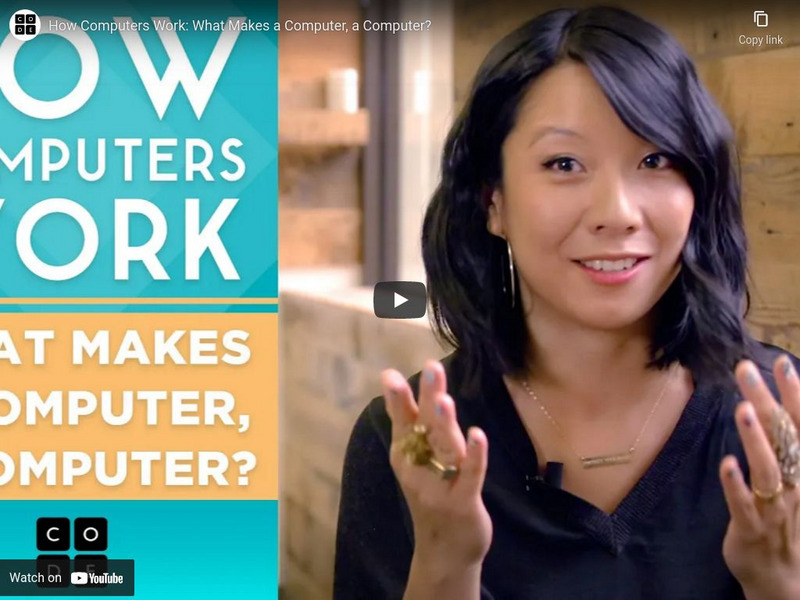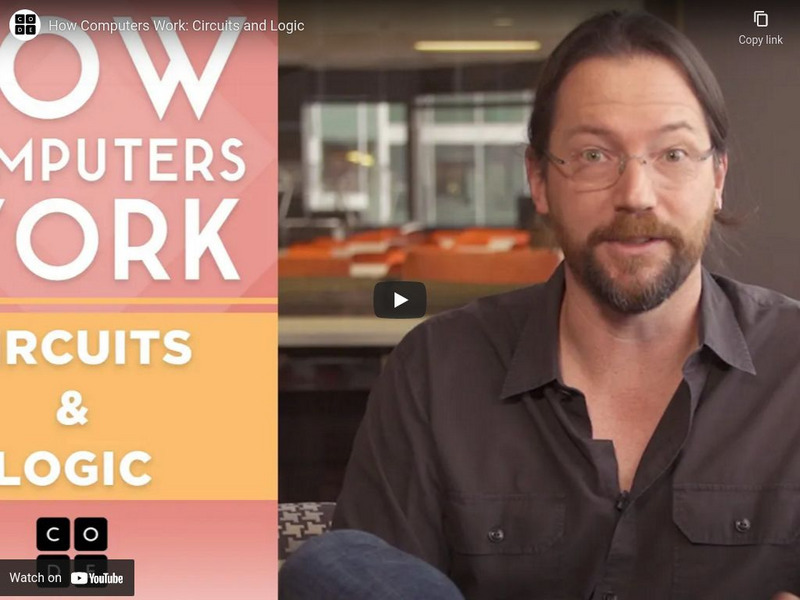Code.org
The Internet: Packets, Routing and Reliability
Viewers of this video learn about how computers send and receive information through the Internet. It describes how the Internet splits information into packets and sends it over different routes.
Code.org
How Computers Work: Hardware and Software
Hardware and software go hand in hand. The last installment of a five-part series explains the relationship between computer hardware and software. It turns out that the computer's operating system provides the link between the two.
Code.org
The Internet: How Search Works
Imagine spooky spiders crawling around a virtual web. It turns out that's really how search engines work! Learners view a video that explains how search engines find relevant web pages. Programs called spiders are continually searching...
Code.org
The Internet: Cybersecurity and Crime
Don't get tricked into opening suspicious e-mails. Viewers learn about the importance of cybersecurity. The video describes several different threats to computers, including viruses, malware, and phishing attacks. Time to change...
Code.org
The Internet: Encryption and Public Keys
We can partially thank Caesar that our e-mails are secure! Viewers learn how encryption and public key cryptography keep our communications safe over the Internet. The video also briefly covers the history of ciphers, such as the Caesar...
Code.org
The Internet: HTTP and HTML
Four-letter words aren't necessary a bad thing. The fifth video of an eight-part series about how the Internet works focuses on HTTP and HTML. It describes how computers call up websites from servers using Get and Post requests.
Code.org
The Internet: IP Addresses and DNS
Soon the Internet will have 340 undecillion unique IP addresses! An informative video explains how the Internet is a design philosophy. It then explores how computers can communicate with each other using IP addresses and the domain...
Code.org
The Internet: Wires, Cables and WiFi
You thought hooking up your TV was difficult! Scholars learn about the various components that allow Internet users to send information across vast distances. This includes wires, fiber optic cables, and WiFi.
Code.org
What is the Internet?
You probably use the Internet every day, but do you really know what it is? A captivating video describes how the Internet works. One of the people involved in the development of the Internet explains how it came into existence.
Code.org
How Computers Work: Circuits and Logic
Finally, logic gates make some sense. Individuals learn how computers make computations using circuits and logic gates. The third video in a five-part series explains some explains of how different types of logic gates perform different...
Code.org
How Computers Work: Binary and Data
There are two types of people in the world: those who understand binary and those who do not. Pupils watch a video that describes how computers store information using binary code. They learn how programmers can encode text, images, and...
Code.org
How Computers Work: What Makes a Computer, a Computer?
You see computers all the time, but do you really know how a computer works? The first installment of a five-part playlist explains the essential functions of a computer. The video describes, in detail, each of the functions: input,...
Code.org
Code.org: How Computers Work: What Makes a Computer, a Computer?
Computers are all around us, but what really makes a computer, a computer? Explore the history of computers and the features they all share. [5:09]
Code.org
Code.org: What Is the Internet?
What is the internet? Short answer: a distributed packet-switched network. Vint Cerf, one of the "fathers of the internet" explains the history of how the net and how no one person or organization is really in charge of it. [3:44]
Code.org
Code.org: How Computers Work: Data and Binary
If you want to learn how a computer works the inside, it all comes down to 1's and 0's. They are the backbone of how computers input, process, store, and output information. Watch this video to see how text, images, and sound can be...
Code.org
Code.org: How Computers Work: Circuits and Logic
How can you use technology to make your ideas come to life? Circuits are the answer! Watch this video to learn how circuits turn binary signals into websites, videos, music, and games. This is the fourth video out of six in the series...
Code.org
Code.org: How Computers Work: Cpu, Memory, Input & Output
No matter what you want to do with a computer, every single action is about inputting information, storing and processing that information, and outputting the information back into the world. Learn how computers accomplish these...
Code.org
Code.org: How Computers Work: Hardware & Software
According to Bill Gates, computers have the potential to do amazing things, but the only thing that makes a computer smart is you! Learn about the relationship between software and the hardware it controls on computers. This the last...
Code.org
Code Studio: Flappy Bird
In a few minutes, with Code.org's simple drag-and-drop tutorials students can make their own Flappy game from any web browser or tablet, and share it instantly with friends. [1:33]
Code.org
Code Studio: Computational Thinking: Unplugged: Move It Move It
Learn how to write steps for challenge of finding the smiley face. This unplugged activity helps learn about algorithmic thinking.
Code.org
Code.org: Persistence & Frustration: Stevie and the Big Project
Stevie and her friends will teach students that the natural frustration that you feel when working on something difficult can be overcome with a little persistence! [6:03]
Code.org
Code Studio: Unplugged: Getting Loopy
This lesson introduces the programming concept of loops through a dance activity. [2:22]
Code.org
Code Studio: Unplugged: My Loopy Robotic Friends
Make your programs more shorter using loops. [1:08]
Code.org
Code.org: Cs Fundamentals: Collecting Treasure With Laurel
Students will be practicing their programming skills using a new character, Laurel the Adventurer. When someone starts programming they piece together instructions in a specific order using something that a machine can read. Through the...























